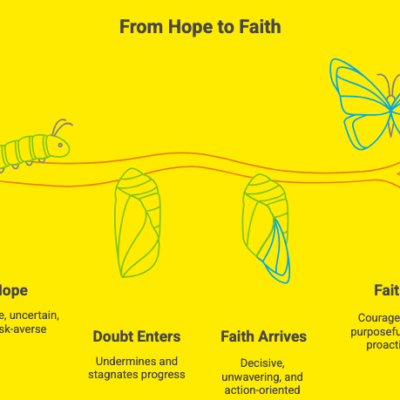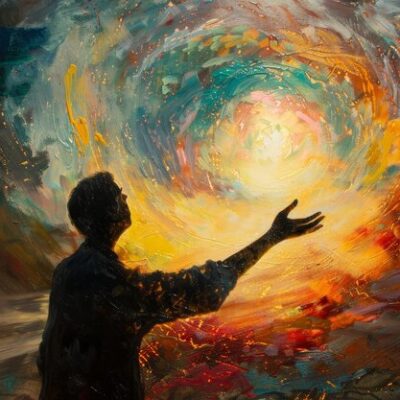All too often, it is audacity and not talent that moves an artist to center stage.”
― Julia Cameron
Every single time, since I came across this book in my 20’s I have taken the Journey of 12 week..something Phenomenal has Shifted in My life. Towards the end of 2023, I started again (my 7th time), and a few friend came along, and suggested we do this together. We have been doing this on Sundays 8-9 am. for the last 9 months.
We have now decided to do a Re-Boot and start the Journey at the same starting point, all over again. I am curious how this will unfold 🙂
Doing this is “WORK” and discipline and a deep desire to recover the spiritual electricity that runs through us. We don’t have to understand electricity , to reap and basks in its gifts.
I am committing to adding the Weeks, “Harvest” Here. Every week. In a way..making our journey (without the names of course) available to anyone who is curious.

Artists way is a spiritual Path practiced through Creativity
Julia cameron
Sharing my synopsis
The 12 Weeks Themes @ a Glance
(Because someone asked and hopefully you feel excited to free your creativity
Week 1: Recovering a Sense of Safety
- Acknowledging Creative Fears: Recognizing the fears that inhibit creativity is the first step towards overcoming them. Identifying these fears can help individuals understand what holds them back.
- Critics and Champions: Understanding the impact of negative voices (internal and external) and cultivating supportive, positive influences is crucial for a safe creative environment.
- The Concept of the Shadow Artist: Many people stifle their creativity due to societal pressures or fear of failure, becoming “shadow artists” who are drawn to creativity but do not practice it themselves.
- Affirmations: Using positive affirmations can help combat negative self-talk and build a sense of safety and confidence.
- Creating Boundaries: Setting boundaries with others and oneself helps protect creative time and space, fostering a safe environment for expression.
Week 2: Recovering a Sense of Identity
- Rediscovering Childhood Dreams: Reflecting on childhood interests and dreams can reconnect individuals with their core creative identity.
- Facing Negative Beliefs: Identifying and challenging negative beliefs about creativity and one’s potential can free individuals to explore their artistic identity.
- The Censor: Recognizing the internal critic, or “Censor,” that doubts and undermines creative efforts is essential for reclaiming artistic identity.
- Cameron’s “Morning Pages”: This daily practice of free-writing helps clear the mind, process emotions, and tap into deeper creative thoughts.
- Taking Creative Risks: Embracing small, manageable risks in creative endeavors can help build confidence and a stronger sense of identity as an artist.
Week 3: Recovering a Sense of Power
- Channeling Anger: Viewing anger as a signpost for unmet needs or desires can help channel it into creative energy rather than letting it fester.
- Synchronicity: Noticing and acting on synchronicities—coincidences that seem meaningful—can affirm one’s creative path and provide inspiration.
- Dealing with Criticism: Learning to handle criticism constructively without internalizing negativity is crucial for maintaining creative power.
- Shifts in Perception: Shifting from a scarcity mindset to one of possibility and abundance can empower creative expression.
- Empowerment Through Action: Taking deliberate actions, however small, can reclaim power from fear and procrastination.
Week 4: Recovering a Sense of Integrity
- Honoring True Desires: Identifying and honoring one’s true creative desires rather than conforming to others’ expectations fosters integrity.
- Creative U-Turns: Recognizing moments when one has abandoned creative pursuits and understanding the reasons behind them can prevent future setbacks.
- The Virtue Trap: Understanding the trap of being overly virtuous or self-sacrificing, which can stifle creativity, helps in reclaiming personal integrity.
- Assessing Life Balance: Reflecting on how time and energy are allocated can reveal areas where creativity is being neglected.
- Saying No: Learning to say no to demands that drain energy or time is vital for maintaining creative integrity.
Week 5: Recovering a Sense of Possibility
- Expansion of Creativity: Embracing the idea that creativity is boundless and that there is no wrong way to be creative.
- Envisioning Creative Success: Visualizing success and positive outcomes can help manifest those results in reality.
- Overcoming Skepticism: Recognizing and challenging skepticism about one’s creative potential opens up new possibilities.
- Exploring Different Mediums: Experimenting with various forms of artistic expression can lead to unexpected discoveries and growth.
- Using Creative Tools: Employing tools like “Mind Mapping” or “Brainstorming” can expand creative thinking and problem-solving.
Week 6: Recovering a Sense of Abundance
- Abundance vs. Scarcity Mindset: Shifting from a scarcity mindset to one of abundance encourages sharing, risk-taking, and generosity in creative work.
- Clearing Out the Clutter: Physically decluttering space and mentally clearing out negative thoughts can make room for creativity.
- Gratitude: Practicing gratitude for existing creative opportunities and achievements fosters a sense of abundance.
- Financial Clarity: Gaining a clear understanding of financial resources and managing them can reduce stress and enable more creative freedom.
- Nurturing Creative Ventures: Investing time, resources, and energy into creative projects is essential for growth and abundance.
Week 7: Recovering a Sense of Connection
- Rediscovering Play: Embracing playfulness can unlock creativity and reduce the pressure of producing “serious” work.
- Connecting with Nature: Spending time in nature can inspire creativity and provide a sense of calm and perspective.
- Building a Creative Community: Engaging with other creative individuals can provide support, inspiration, and constructive feedback.
- Listening to Intuition: Trusting one’s intuition and inner voice can guide creative decisions and paths.
- Spirituality and Creativity: Exploring the connection between spirituality and creativity can deepen the creative process and provide a sense of purpose.
Week 8: Recovering a Sense of Strength
- Confronting Fears: Facing and acknowledging fears related to success, failure, or judgment can strengthen resolve and creative courage.
- Setting Goals: Establishing clear, achievable goals can provide direction and motivation for creative projects.
- Accepting Cycles of Creativity: Understanding that creativity has natural cycles of activity and rest can reduce frustration and burnout.
- Practicing Patience: Recognizing that creative growth takes time and being patient with the process can foster resilience.
- Celebrating Small Wins: Acknowledging and celebrating small successes can build confidence and encourage continued effort.
Week 9: Recovering a Sense of Compassion
- Self-Compassion: Practicing self-compassion and forgiveness for past mistakes or perceived failures fosters a healthier creative process.
- Dealing with Perfectionism: Letting go of perfectionism allows for experimentation, learning, and growth.
- Compassion for Others: Extending compassion to others, understanding their creative struggles, can foster a supportive environment.
- Revisiting Past Projects: Reviewing past creative projects with a compassionate lens can offer valuable insights and lessons.
- Balancing Criticism and Praise: Understanding the impact of criticism and praise, both self-directed and from others, helps maintain a balanced perspective.
Week 10: Recovering a Sense of Self-Protection
- Setting Boundaries: Establishing and maintaining boundaries is crucial for protecting creative energy and focus.
- Managing Time: Prioritizing creative work and managing time effectively helps safeguard against distractions and burnout.
- Avoiding Toxic Influences: Recognizing and distancing oneself from toxic relationships or environments that drain creative energy is essential.
- Protecting Creative Privacy: Keeping certain creative projects private until they are ready to be shared can protect them from premature criticism or influence.
- Self-Care: Prioritizing physical and mental well-being supports sustained creative output and resilience.
Week 11: Recovering a Sense of Autonomy
- Independence in Creativity: Embracing one’s unique creative voice and style fosters autonomy and confidence.
- Trusting the Process: Learning to trust the creative process, even when outcomes are uncertain, reinforces independence.
- Self-Reliance: Building skills and resources that support creative work enhances self-reliance and reduces dependency on external validation.
- Overcoming External Pressure: Resisting the pressure to conform to others’ expectations or commercial demands preserves artistic integrity.
- Embracing Authenticity: Being true to oneself and one’s creative vision, regardless of external opinions, strengthens autonomy.
Week 12: Recovering a Sense of Faith
- Trusting in Creativity: Developing faith in the creative process and one’s ability to overcome obstacles fosters confidence and resilience.
- Letting Go of Control: Embracing the uncertainty of the creative journey and letting go of the need to control every outcome can lead to unexpected discoveries.
- Celebrating Creative Progress: Reflecting on the journey and celebrating growth, regardless of the end result, reinforces a positive creative mindset.
- Connecting with a Higher Purpose: Exploring the connection between creativity and a higher purpose or calling can provide deeper meaning and motivation.
- Maintaining a Creative Practice: Committing to an ongoing creative practice, beyond the course, ensures continued growth and development.





